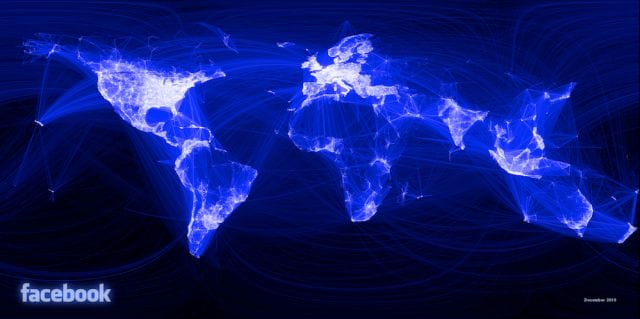
In the past, we’ve discussed the immense power of Facebook for sending traffic to media sites. Take, for example, our most visited articled this March “The Hipster Music Index.” Of the 154K visitors, about half of them came from Facebook. From our Google Analytics:
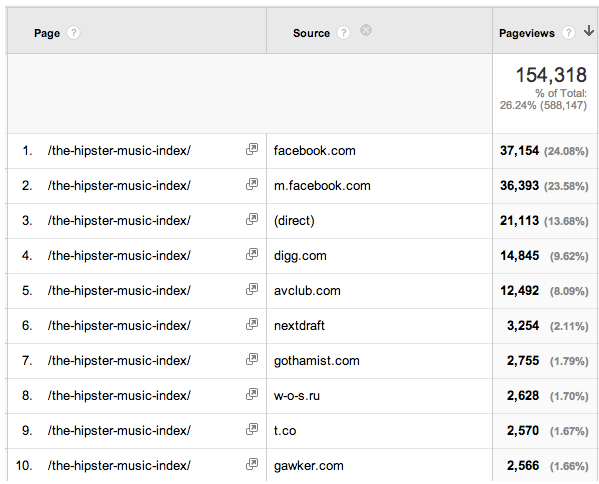
But that was our most popular article of the month. For a more representative article, let’s look at the traffic referrals for a post called “Who Wants to be a Cyborg.” Here only about 5% of traffic came from Facebook desktop and mobile.

In our experience it’s hard to predict whether an article will be popular on Facebook or not. Even an article that is pretty popular overall might not get much of its traffic from Facebook. A couple of times a month, however, an article will unpredictably “go viral” on Facebook and we’ll get flooded with traffic from the site. But the median article on Priceonomics will only get a modest amount of Facebook traffic.
Facebook traffic referrals seem to follow the “power law”. A couple of big hits are responsible for almost all of the returns. If you rely on Facebook for most of your traffic, you’re in the “hit-driven business.”
Take Upworthy, for example. The company is clearly a viral juggernaut, but even at their scale, they are not immune to the lumpy nature of Facebook traffic. From the period March 1 to March 20th, the company had 171 posts that generated over a staggering 12 million Facebook likes on their site. However, 10 of those posts made up 7.2 million of those Facebook likes. The top 33 posts made up 80% of the Facebook activity. Upworthy’s Facebook performance follows the “80 – 20” rule almost perfectly.
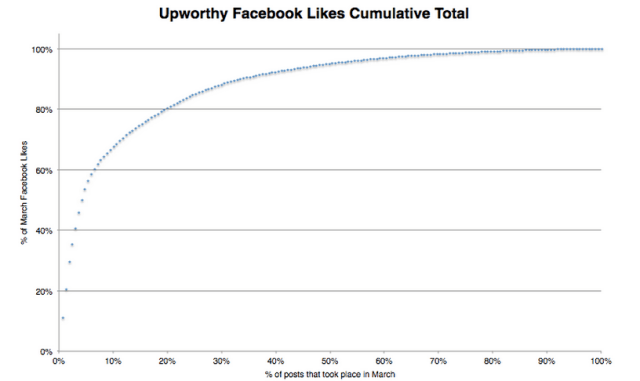
In case you’re curious, these were the top 10 posts on Upworthy from March 2014, as measured by Facebook likes:
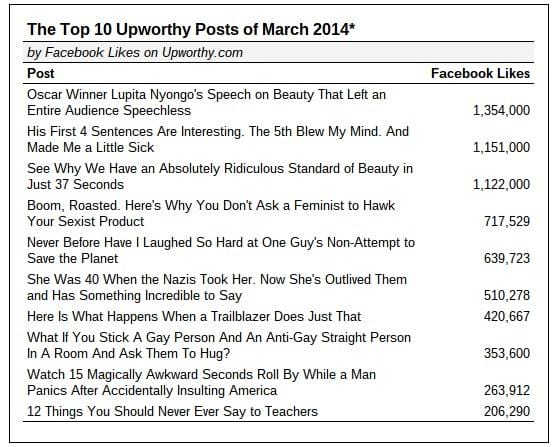
*Through March 20, 2014
Sometimes Upworthy posts something and it gets a million Facebook likes. Sometimes it just gets a few hundred. Nevertheless, the vast majority of the site’s traffic from Facebook is driven by the viral nature of a few stories, which is similar to our experience at Priceonomics.
In November of last year, Upworthy had 90 million visitors, a truly banner-worthy month. But then a month later in December, site traffic took a dip. This Business Insider article posits that Upworthy got “crushed” by Facebook algorithm changes. Below is the site’s overall traffic history:
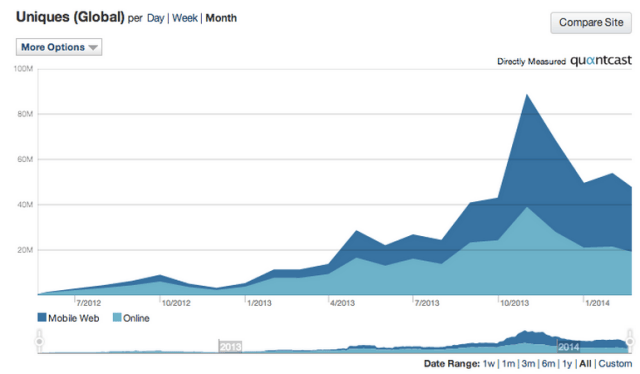
Source: Quantcast
Did Upworthy actually get “crushed” by Facebook? More likely, they just had some enormous hits in November and fewer mega-hits in December. When you play the game of Facebook traffic, sometimes you have big hits and sometimes you don’t. Given this dynamic, you’d expect large swings in traffic each month.
This post was written by Rohin Dhar. Follow him on Twitter or Google Plus. To get occasional notifications when we write blog posts, sign up for our email list.



